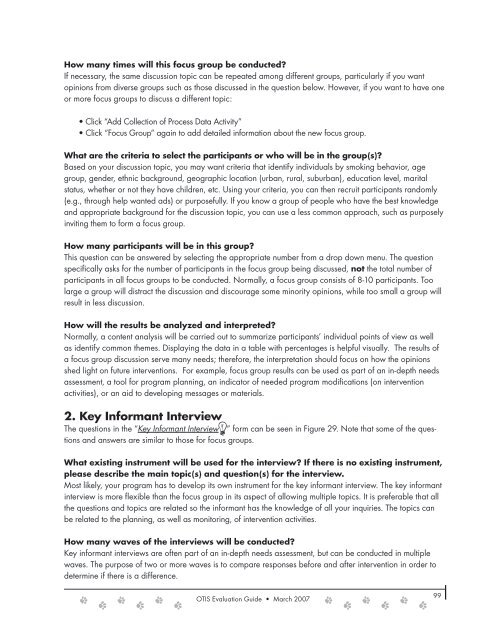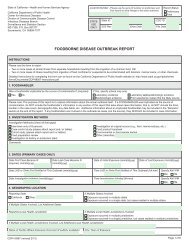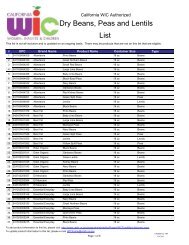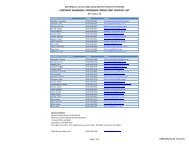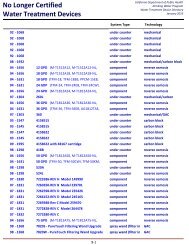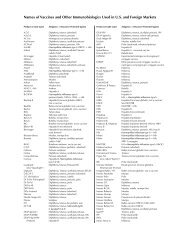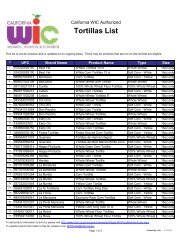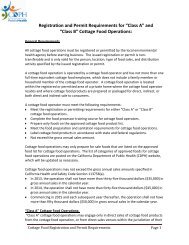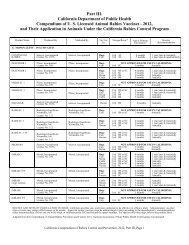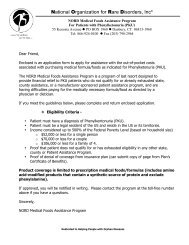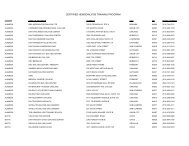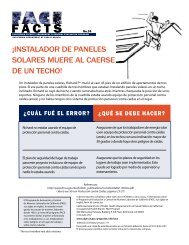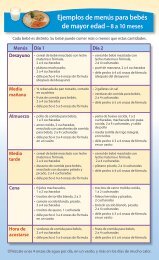OTIS Evaluation Guide (PDF) - California Department of Public Health
OTIS Evaluation Guide (PDF) - California Department of Public Health
OTIS Evaluation Guide (PDF) - California Department of Public Health
Create successful ePaper yourself
Turn your PDF publications into a flip-book with our unique Google optimized e-Paper software.
How many times will this focus group be conducted?<br />
If necessary, the same discussion topic can be repeated among different groups, particularly if you want<br />
opinions from diverse groups such as those discussed in the question below. However, if you want to have one<br />
or more focus groups to discuss a different topic:<br />
• Click “Add Collection <strong>of</strong> Process Data Activity”<br />
• Click “Focus Group” again to add detailed information about the new focus group.<br />
What are the criteria to select the participants or who will be in the group(s)?<br />
Based on your discussion topic, you may want criteria that identify individuals by smoking behavior, age<br />
group, gender, ethnic background, geographic location (urban, rural, suburban), education level, marital<br />
status, whether or not they have children, etc. Using your criteria, you can then recruit participants randomly<br />
(e.g., through help wanted ads) or purposefully. If you know a group <strong>of</strong> people who have the best knowledge<br />
and appropriate background for the discussion topic, you can use a less common approach, such as purposely<br />
inviting them to form a focus group.<br />
How many participants will be in this group?<br />
This question can be answered by selecting the appropriate number from a drop down menu. The question<br />
specifically asks for the number <strong>of</strong> participants in the focus group being discussed, not the total number <strong>of</strong><br />
participants in all focus groups to be conducted. Normally, a focus group consists <strong>of</strong> 8-10 participants. Too<br />
large a group will distract the discussion and discourage some minority opinions, while too small a group will<br />
result in less discussion.<br />
How will the results be analyzed and interpreted?<br />
Normally, a content analysis will be carried out to summarize participants’ individual points <strong>of</strong> view as well<br />
as identify common themes. Displaying the data in a table with percentages is helpful visually. The results <strong>of</strong><br />
a focus group discussion serve many needs; therefore, the interpretation should focus on how the opinions<br />
shed light on future interventions. For example, focus group results can be used as part <strong>of</strong> an in-depth needs<br />
assessment, a tool for program planning, an indicator <strong>of</strong> needed program modifications (on intervention<br />
activities), or an aid to developing messages or materials.<br />
2. Key Informant Interview<br />
The questions in the “Key Informant Interview ” form can be seen in Figure 29. Note that some <strong>of</strong> the questions<br />
and answers are similar to those for focus groups.<br />
What existing instrument will be used for the interview? If there is no existing instrument,<br />
please describe the main topic(s) and question(s) for the interview.<br />
Most likely, your program has to develop its own instrument for the key informant interview. The key informant<br />
interview is more flexible than the focus group in its aspect <strong>of</strong> allowing multiple topics. It is preferable that all<br />
the questions and topics are related so the informant has the knowledge <strong>of</strong> all your inquiries. The topics can<br />
be related to the planning, as well as monitoring, <strong>of</strong> intervention activities.<br />
How many waves <strong>of</strong> the interviews will be conducted?<br />
Key informant interviews are <strong>of</strong>ten part <strong>of</strong> an in-depth needs assessment, but can be conducted in multiple<br />
waves. The purpose <strong>of</strong> two or more waves is to compare responses before and after intervention in order to<br />
determine if there is a difference.<br />
<strong>OTIS</strong> <strong>Evaluation</strong> <strong>Guide</strong> • March 2007<br />
99


